Mark Anthony Neal's Blog, page 2
November 24, 2024
What if Black Galleries Were Part of the Museum Acquisition Pipeline? | BAIA
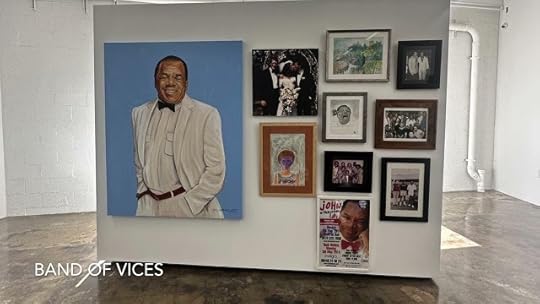
'In this illustrated summary of the article “What if Black Galleries Were Part of the Museum Acquisition Pipeline?", Chenoa Baker of BAIA highlights the clear art economic racism affecting Black-owned museums and galleries. With words offered from prominent Black gallery owners such as Richard Beavers and Najee Dorsey businesses are determined to hold Museums accountable and stop the cycle of disenfranchisement.'
Robin Means Coleman - Department of Media Studies and African American and African Studies, University of Virginia | The Black Studies Podcast
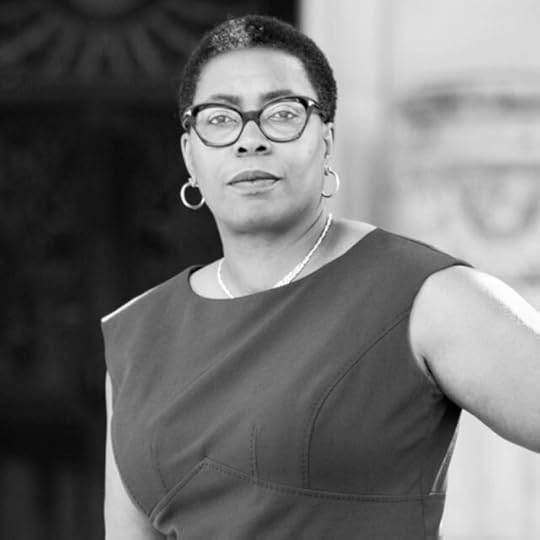
'Robin Means Coleman is Professor of Media Studies and of African American and African Studies at the University of Virginia where she is also Director of the Black Fantastic Media Research Lab. In this conversation, we discuss the dynamic character of Black Studies in relation to community-campus relations, the political nature of research and teaching, and the complex relationship between Black Studies and study focused on Black topics.'
November 21, 2024
Demographics Are Not destiny | Halimah Abdullah | The Emancipator
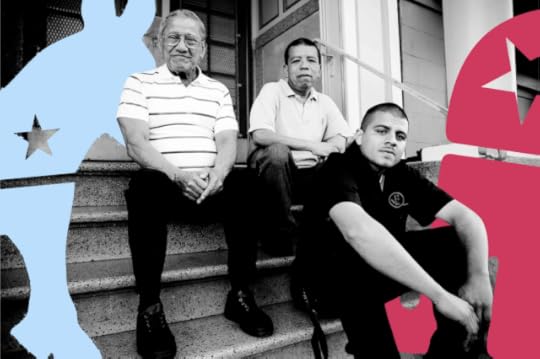 Demographics are not destiny
Demographics are not destinyby Halimah Abdullah, The Emancipator
November 17, 2024
Exit polling data from the 2024 presidential election is much like “The Matrix,” in a sense: a flow of numbers that, when viewed properly, offers a revealing portrait of the American electorate and a narrative of stark racial divisions and fueled recriminations among communities of color.
This through line is reflected in the national shift to the political right, the impending return of President-elect Donald Trump to the White House, and the racism and sexism that factored into voters’ rejection of Vice President Kamala Harris’ historic bid as both the first Black and the first South Asian woman to be nominated by a major party.
“This is an election that is a realignment election and it is an election that should force us to think differently about both our class politics, but also our racial politics,” Johns Hopkins history professor Leah Wright Rigueur said during a recent session examining race and exit polling hosted by Harvard University.
Nowhere is that realignment more evident than in examining why several highly coveted voting blocs voted as they did. “It is absolutely a fallacy to assume that demographics must be destiny,” Rigueur reminded those watching.
The rightward tiltIn the next 20 years, demographers estimate that people of color will make up the majority of the nation’s population. While these changes portend fundamental shifts in every institution that forms the backbone of this nation — from how and what we teach our children to the makeup of city councils — this racial shift does not predict how these various groups will vote, what political alliances they may form and the issues they may deem most important.
“One of the things I think, for years, that we heard was that demographics were destiny,” said Rigueur, author of “The Loneliness of the Black Republican.” “We should all throw that phrase out of the window. If I never have to hear it again. I would be thrilled, because what ‘demographics is destiny’ does is offer us a fundamental misunderstanding.”
Voters of color are not nor have they ever been monolithic and, increasingly, immigrants in particular are trending right in their politics.
For example, national exit polling by Edison Research as published in the Washington Post highlighted that among Latinos, who are the fastest growing segment of the population, 54% of men voted for Trump, while 60% of Latinas cast ballots for Harris.
View this post on InstagramA post shared by The Emancipator (@the_emancipator)
As they have for seven decades, a majority of White women voted for the Republican presidential candidate — 53% voted for Trump, while 60% of White men did so. Seventy-seven percent of the Black men who were polled cast ballots for Harris and Black women, traditionally the most reliable Democratic voting bloc, voted 91% for Harris.
The reasons for these differences are multifaceted.
AP VoteCast exit polling by The Associated Press found that, of the more than 115,000 people they surveyed — which included cross sections of people of color — roughly two-thirds of those who cast ballots for Harris said preserving the future of democracy motivated their decision to vote for her. Roughly half of Trump voters say they were motivated by the economy and immigration — in particular, migration to the U.S.-Mexico border.
Just one-third of Trump’s voters cited democracy as the most important reason for their votes.
A cross section of exit polling — ranging from the Associated Press to Edison — all found that, to varied degrees, there was a shift among Black and Latino men toward the Republican presidential candidate. With Black men, that shift was incremental and not nearly the much-hyped swing that dominated the headlines in the final days of the election contest.
With Latinos, and men of all races, that shift was far more dramatic. For example, Trump won the majority of votes in Miami-Dade County in Florida — the first Republican presidential candidate in more than 30 years to flip a majority Hispanic county.
This negates the long held belief that people of color will, by default, vote Democratic.
“The social pressure dynamic in Latino and Black communities has been reduced,” said Bernard L. Fraga, an associate professor in the Department of Political Science at Emory University, and author of “The Turnout Gap.” Fraga, the faculty coordinator of the Latinx Studies Initiative at Emory, also said that thanks to niche spaces online and in social media, conservative voters of color are now more vocal.
About that Latino voter shift …In his analysis of Latino voting trends from 2016 through 2020s, Fraga found that “You have a set of conservative Latinos across national origin groups that are often lower income, conservative on immigration, have lower levels of education and live in rural areas.”
“If they were White people we would say ‘that’s a Trump voter,’” Fraga said, adding that Trump was able to identify and mobilize them. “These are not people Biden or Harris lost, they never had them.”
Some of this is a heady blend of economic concerns and idealized views of assimilation, which might predict someone’s likelihood of being Republican, said Andra Gillespie, an author and professor of political science at Emory University.
“People who aspire to fulfill the American dream are more likely to want to be Republican,” Gillespie said. “So on immigration that would lead them to vote in a way liberals would consider counterintuitive. ‘I got here legally or my folks got here legally so those folks should do it the right way.’ Trump says racist things about your community but they don’t perceive those slights as being against them.”
Black men understood the assignmentFor all of the headlines and hand-wringing about Harris’ perceived struggles with Black male voters, percentage-wise “Black men are the second most loyal group to the Democratic Party, behind Black women,” Rigueur said.
The consternation can be traced, in part, to a NAACP/HIT Strategies and Hart Research poll conducted in August, that showed 1 in 4 younger Black men backing Trump.
At the time, some Democratic strategists attributed her traction troubles among this group to misinformation about her record as a California prosecutor, a failure to speak directly to young Black men’s concerns. Former President Barack Obama chided the group, suggesting sexism was at play. Harris sought to appeal to them with an economic plan to make millions in loans available to people hailing from underserved communities and also faced tough questions during her sit-down with radio host Charlamagne tha God and faced tough questions.
Amid all of this, and as headlines hammered them for alleged defections, thousands of Black men hopped on an online call, and over the course of the campaign raised millions for Harris. They also voted in huge numbers for her.
The Muslim and Arab American protest voteA significant segment of Muslim and Arab American voters bucked a two-decade-long, post-9/11 trend of backing Democrats and instead lodged votes that were essentially a protest against the Biden-Harris administration’s handling of the humanitarian crisis in war-torn Gaza.
According to an exit poll of 1,575 American Muslim voters conducted by the Council on American-Islamic Relations (CAIR), the nation’s largest Muslim civil rights and advocacy organization, Green Party candidate Jill Stein received 53% of the Muslim vote, Trump received 21% and Harris received 20%.
While those trends have higher impact in swing states such as Michigan, where there are significant numbers of Muslim and Arab American voters, it should be noted that Muslims make up roughly 1% of the population, roughly a quarter of the nation’s Muslims are Black and their votes were counted as part of that population’s groundswell of support for Harris, political experts said.
“Our final exit poll of American Muslim voters confirms that opposition to the Biden administration’s support for the war on Gaza played a crucial role, leading to a sharp drop in support for Vice President Harris,” CAIR Government Affairs Department Director Robert S. McCaw wrote in a press release.
“It’s not about the (economic) reality, it's about how people feel.”In the third quarter of 2024 leading up to the presidential election, the White unemployment rate was at 3.8%, for Black people it was 6.2%, for Latinos it was 5.3%, and for Asians it was 4.1%, according to the Bureau of Labor Statistics. When looking at the same quarter for 2023, for the groups of color, there was roughly a 1% increase in unemployment. White unemployment didn’t shift.
Under the Biden-Harris administration, incomes have outpaced price increases.
Still, homebuying is far out of reach for many of the nation’s homebuyers and, according to an NBC News analysis of housing and election returns data, “Many of the counties that swung most dramatically toward Donald Trump on Election Day were also among America’s toughest housing markets.”
And the oft-discussed price of eggs is up roughly 30% over last year.
“It’s not about the reality,” Fraga said. “It’s about how people feel,” Fraga said.
Given that communities of color are often more disparately hit by economic headwinds, it makes sense that some segments among that group would reject the party in power in the White House in favor of change, political experts said. Others, such as Black male voters, likely cast a longer sideways glance at Trump, but ultimately, his racism outweighed other concerns.
“There was an assumption for a very long time that if you were Latino, that you cared about immigration, that would be your number one issue we have seen in the last three elections, the presidential election cycles, that that was actually nowhere near the top of what Latino voters as a group saw as the mainstay, the number one issue consistently amongst Latino voters across the board, for the last three election cycles, it has been the economy, the economy, the economy,” Rigueur said.
Is the strategy divide and conquer?Perhaps the biggest question out of all of this exit polling is our framework. Why are we so hyperfocused on the political movements of voters of color and so quick to place blame?
In the autopsy of election results, why scapegoat Black and Latino men as the problem, when they are not and have actually been voting in ways that follow the historic trends and relationships to the Republican Party and the Democratic Party, Khalil Gibran Muhammad, a history professor at Harvard University and director of the school’s Institutional Antiracism and Accountability Project, posed during the recent race and exit polling debrief.
“Not only are White people 71% of the electorate in this year’s race, despite the changing demographics of the country, they hold overwhelming power to shape the outcome of our elections, hard stop,” Muhammad said. “The fact that we are even having this conversation about what people of color are doing or not doing, is putting arguably an unfair burden on people of color to correct for the preferences of White people.”
Fraga suggests that communities of color should recognize this and find common ground: “The best allies of people of color are other people of color.”
In order to do that, voters of color might want to take a page from Black voters.
Rigueur noted that Black voters “have a heightened sense of what is at stake in terms of democratic norms, democratic institutions, and essentially the survival of democracy.”
This article first appeared on The Emancipator and is republished here under a Creative Commons license.
 PARSELY = { autotrack: false, onload: function() { PARSELY.beacon.trackPageView({ url: "https://theemancipator.org/2024/11/17...", urlref: window.location.href }); } }
PARSELY = { autotrack: false, onload: function() { PARSELY.beacon.trackPageView({ url: "https://theemancipator.org/2024/11/17...", urlref: window.location.href }); } }
November 19, 2024
Left of Black | S14:E1 | Jasmine Nichole Cobb on the Art and Texture of Black Hair

What is the cultural significance of Black hair and how does it impact the way African Americans show up across all arenas of social life? And what are some art practices that have been built around that? In this episode of Left of Black, host Mark Anthony Neal welcomes fellow Duke University colleague Prof. Jasmine Nichole Cobb to discuss her book, New Growth: The Art and Texture of Black Hair (Duke University Press).
American Artist Stanley Whitney Talks Agnes Martin, Rothko, and Ancient Architecture | NOWNESS
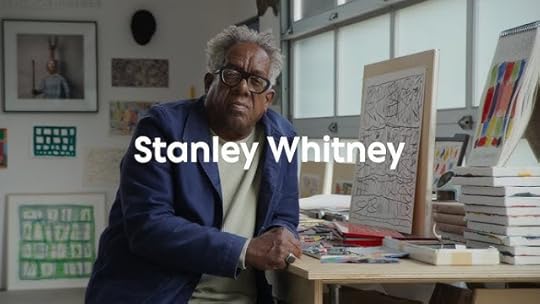
"Set amid pines and leafy green, American contemporary artist Stanley Whitney opens his world to Art Basel from his studio on Long Island for Meet the artists. Presenting contemporary creatives shaping today’s cultural landscape, for this episode, director Jeano Edwards expands the series through Whitney’s painting practice and the influences that have shaped his work, reflecting on the significant impact of his time in Rome and Egypt in the 1990sLooking back on this era, Whitney recognizes how altering his environment initiated a shift in his perspective, confronted by monumental architecture that transformed his understanding of space and density. “When I went to Egypt, when I looked at the Pantheon, they had pillars that were 12 tons,” he says. “I got a real sense of density, and that was the last key to the puzzle I needed to make my work"."
Going Underground with Jamel Shabazz | Street Photography | The Museum of Modern Art

“It's not about me,” explains Shabazz.“I'm just a vessel using my position to freeze time and then thaw the moments out later on so people can see them and heal, rejuvenate, or just celebrate.”
"In this artist profile, we visited street photographer Jamel Shabazz at his home studio where he is immersed in four decades worth of archival work. Most known for his vibrant images of everyday people on New York City’s streets and subway, Shabazz shares his core influences, philosophy, and process. Venturing back underground 43 years later, Shabazz reunites with two men to recreate one of his most iconic images, "The Righteous Brothers"."
November 17, 2024
Tech & Soul (E.8): Culture Vultures, Culture Builders, and Everything In Between
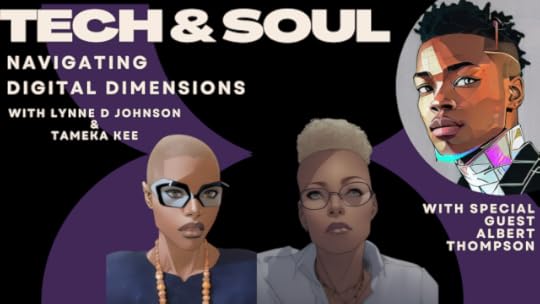
'In this episode, Lynne D. Johnson and Tameka Lee sit down with digital innovation expert Albert Thompson and dove into a fascinating discussion about culture and business. How do brands authentically tap into cultural movements while still being profitable? Can you scale intimacy in business?'
Notes on James Baldwin's Words from Ta-Nehisi Coates | WNYC Studios
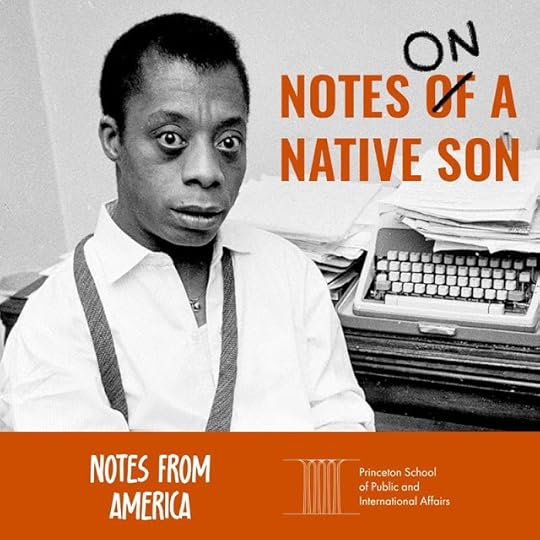
'In the debut episode of “Notes on a Native Son,” host Razia Iqbal sits down with essayist and novelist Ta-Nehisi Coates to discuss one of his favorite passages from the works of writer James Baldwin. His choice comes from Baldwin’s essay “On Being ‘White’…And Other Lies,” published in Essence Magazine in 1984. Coates shares why this piece resonates with him as a writer tackling whiteness, race and what it means to be an American today.'
November 16, 2024
Mark Anthony Neal Discusses Quincy Jones on WURD
Mark Anthony Neal joined WURD Radio host James Braxton Peterson to discuss the great Quincy Jones:
"Off the Wall in 1979, George Benson's, Give Me the Night in 1980, and then Quincy's own The Dude in 1981. In those three albums, you have the sounds for the future of pop music."Left of Black Presents: "Small Talk at FHI" with Dr. Crystal Sanders | Thursday, November 21st
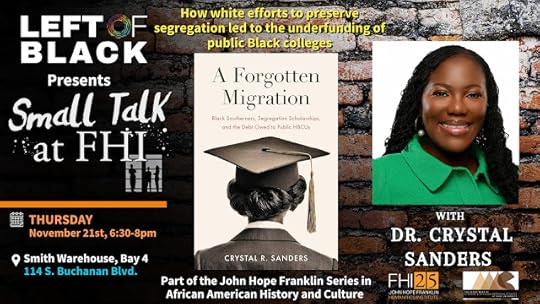
Under Plessy v. Ferguson, in the days before desegregation, southern states were able to fund the graduate education of Black students by forming separate-but-equal programs at tax-supported HBCU’s or having them attend a historically white university in their state. Instead, these “segregation scholarships” ended up paying for many of these African American graduate students to be sent away by relocating them in the North, out West, and in the Heartland of the U.S., thus robbing Black colleges of this influx in financial support. After Brown v. Board of Education passed and ended segregation, these scholarships started to decline but with no consorted effort to institutionalize graduate programs at public Black colleges in the South, which increased the racial disparity in American higher education.
Dr. Crystal R. Sanders, Associate Professor of African American Studies at Emory University, examines how the efforts to preserve segregation led to the underfunding of Black colleges in her new book, A Forgotten Migration: Black Southerners, Segregation Scholarships, and the Debt Owed to Public HBCUs, just published by The University of North Carolina Press on. Dr. Sanders also brings a spotlight to the myriad challenges faced by these Black graduate students who were far from home including isolation, financial hardship, and discrimination. A Forgotten Migration is part of the distinguished John Hope Franklin Series in African American History and Culture.
On Thursday, November 21st , from 6:30 to 8pm, Dr. Sanders will join Mark Anthony Neal, the host of the Webby Award-nominated and Davey Award-winning series Left of Black, at the Franklin Humanities Institute (FHI) to discuss A Forgotten Migration . Free copies of A Forgotten Migration will be given away at the event on a first-come-first-serve basis.
Dr. Sanders is an award-winning historian of the United States in the twentieth century. Her research and teaching interests include African American History, Black Women's History, and the History of Black Education. She received her B.A. (cum laude) in History and Public Policy from Duke University and a Ph.D. in History from Northwestern University. During the 2020-2021 academic year, she was a fellow at the National Humanities Center.
Dr. Sanders is also the author of A Chance for Change: Head Start and Mississippi's Black Freedom Struggle published by the University of North Carolina Press in 2016 as part of the John Hope Franklin Series in African American History and Culture. The book won the 2017 Critics Choice Award from the American Educational Research Association and the 2017 New Scholar’s Book Award from Division F of the American Educational Research Association. The book was also a finalist for the 2016 Hooks National Book Award. Sanders’ work can also be found in many of the leading history journals including the Journal of Southern History, the North Carolina Historical Review, and the Journal of African American History.
Sanders is the recipient of a host of fellowships and prizes. These honors include the C. Vann Woodward Prize from the Southern Historical Association, the Huggins-Quarles Award from the Organization of American Historians, and the Equity Award from the American Historical Association. She has also received an Andrew Mellon Graduate Fellowship in Humanistic Studies, a Ford Foundation Dissertation Fellowship, a National Academy of Education/Spencer Foundation Dissertation Fellowship, a National Academy of Education/Spencer Foundation Postdoctoral Fellowship, and a Visiting Scholars Fellowship at the American Academy of Arts and Sciences.
“Left of Black Presents: Small Talk at FHI,” is a new event sub-series inspired by the legendary jazz poet Gil Scott-Heron’s first album, Small Talk at 125th and Lenox. It is an attempt to recreate the same type of intimacy ever present in Scott-Heron’s groundbreaking work. Named after famed African American historian John Hope Franklin, the FHI became the institutional home of the web series in 2019 during its 10th season. season. Attendees may be videotaped for the upcoming episode of this event on Left of Black.
Mark Anthony Neal's Blog
- Mark Anthony Neal's profile
- 30 followers



